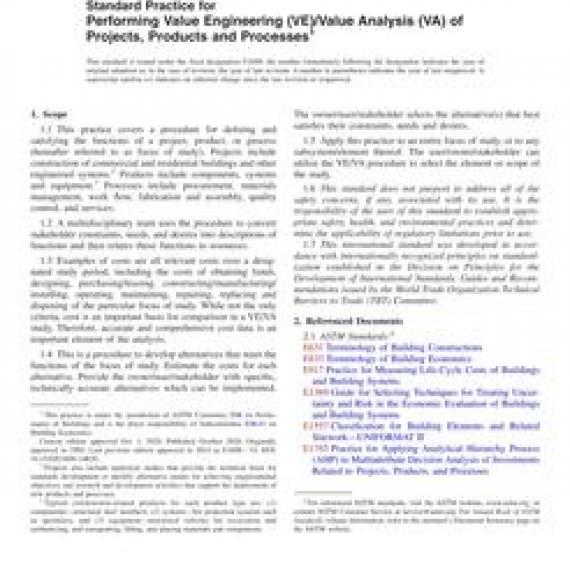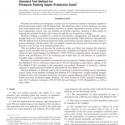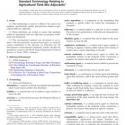No products
ASTM E1699-14(2020)
ASTM E1699-14(2020) Standard Practice for Performing Value Engineering (VE)/Value Analysis (VA) of Projects, Products and Processes
standard by ASTM International, 10/01/2020
Full Description
1.1This practice covers a procedure for defining and satisfying the functions of a project, product, or process (hereafter referred to as focus of study). Projects include construction of commercial and residential buildings and other engineered systems.2 Products include components, systems and equipment.3 Processes include procurement, materials management, work flow, fabrication and assembly, quality control, and services.
1.2A multidisciplinary team uses the procedure to convert stakeholder constraints, needs, and desires into descriptions of functions and then relates these functions to resources.
1.3Examples of costs are all relevant costs over a designated study period, including the costs of obtaining funds, designing, purchasing/leasing, constructing/manufacturing/installing, operating, maintaining, repairing, replacing and disposing of the particular focus of study. While not the only criteria, cost is an important basis for comparison in a VE/VA study. Therefore, accurate and comprehensive cost data is an important element of the analysis.
1.4This is a procedure to develop alternatives that meet the functions of the focus of study. Estimate the costs for each alternative. Provide the owner/user/stakeholder with specific, technically accurate alternatives which can be implemented. The owner/user/stakeholder selects the alternative(s) that best satisfies their constraints, needs and desires.
1.5Apply this practice to an entire focus of study, or to any subsystem/element thereof. The user/owner/stakeholder can utilize the VE/VA procedure to select the element or scope of the study.
1.6This standard does not purport to address all of the safety concerns, if any, associated with its use. It is the responsibility of the user of this standard to establish appropriate safety, health, and environmental practices and determine the applicability of regulatory limitations prior to use.
1.7This international standard was developed in accordance with internationally recognized principles on standardization established in the Decision on Principles for the Development of International Standards, Guides and Recommendations issued by the World Trade Organization Technical Barriers to Trade (TBT) Committee.


































